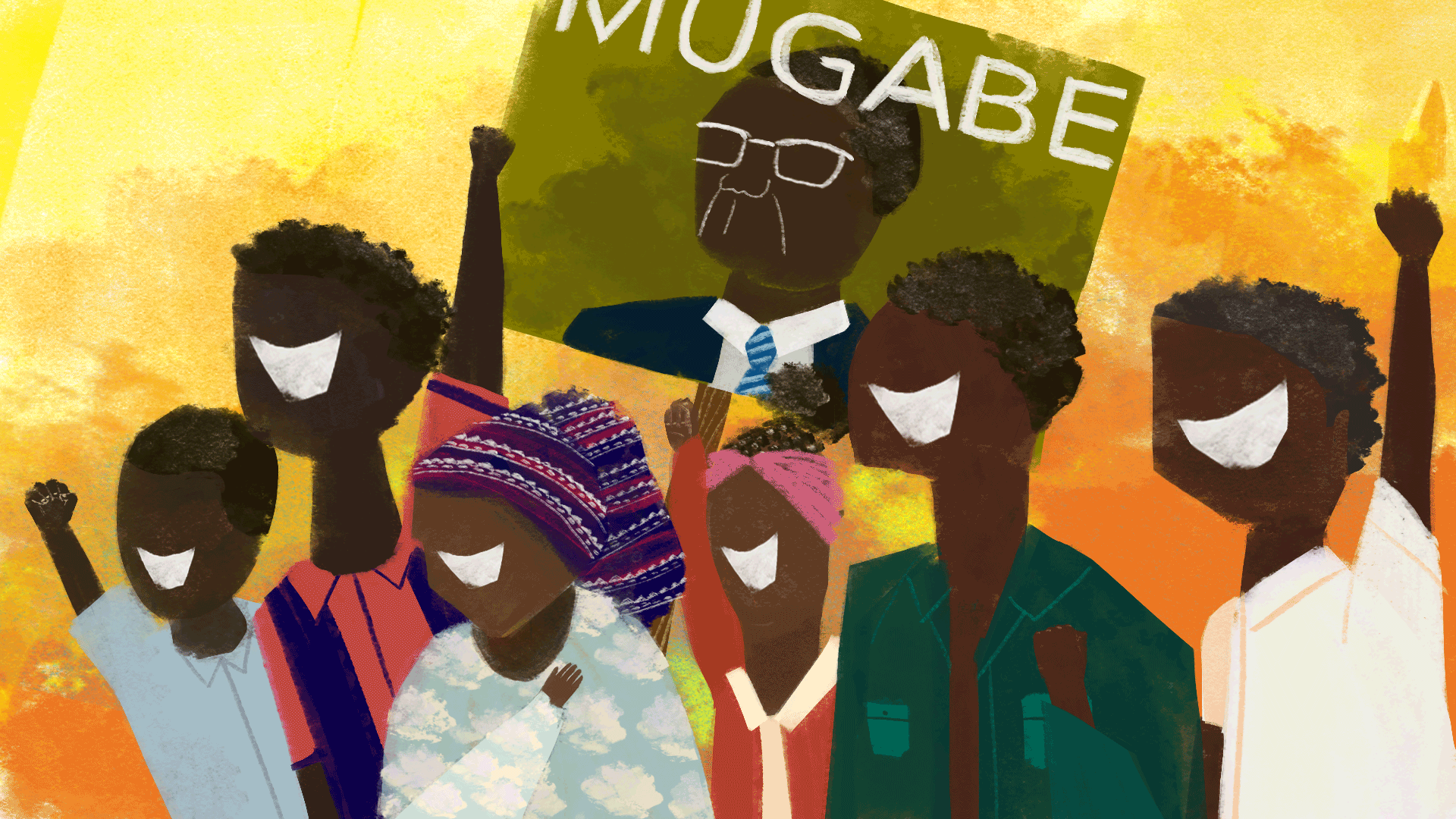
Gamuchirai Masiyiwa, GPJ Zimbabwe
Evelyn Libelato and Tanatswa Libelato, both 15-year-old public school students, study together at their home in Tafara, a high-density suburb of Harare. Evelyn says she didn’t receive assignments for months.
HARARE, ZIMBABWE — Children scatter along the road on a recent afternoon, playing and shouting in Tafara, a high-density suburb of this capital city.
Inside one home, Evelyn Libelato, 15, and her cousin Tanatswa Libelato, also 15, sit in their living room studying a science textbook and old class notes.
The coronavirus pandemic forced Zimbabwe’s schools to close in March, just as Evelyn had begun her third year of high school, known as Form 3. But without a smartphone or laptop for digital learning, she lost months of instruction.
Part of a national lockdown, the closure of Zimbabwe’s schools left public school students scrambling to cover learning gaps, laid bare regional and socioeconomic inequities, and forced more pupils into child labor because they weren’t in class.
The challenge is especially acute in poor and rural regions. As in many countries, students in areas beyond Zimbabwe’s cities – including high-density suburbs – generally have less access to the internet than their urban counterparts.
Students returned to school in November, but having fallen behind, many fear they won’t catch up.
“Since we closed in March, we have not received any assignments or reading guides” for subjects such as math, English and science, Evelyn says. “If we are going to proceed to Form 4 next year, I do not know how I would cope because I have not even grasped the concepts that form the foundation to the next level.”



Zimbabwe’s public schools teach about 4.4 million primary and secondary students, according to the 2018 annual education statistics report. Most students live in rural areas.
Caiphus Nziramasanga, who in 1999 led a commission that recommended dramatic improvements to Zimbabwe’s education system, warns a “knowledge gap is being created between those that have resources and those without, which will result in [socioeconomic divisions] and unequal opportunities.”
Half the country’s urban population has access to the internet, compared with one-fifth of rural residents, according to the Zimbabwe National Statistics Agency. That follows a worldwide pattern: In countries such as Rwanda, Mexico and India, for example, a fraction of rural residents has internet access compared to urbanites.
Cost is a major barrier. A monthly data package can run to 4,500 Zimbabwean dollars (ZWL) ($54) per month — a hefty sum in a nation whose per capita gross domestic product falls just shy of $1,200.
At the same time, only 40% of Zimbabweans own a radio. This also tracks with other nations, from the Democratic Republic of Congo to Haiti to Nepal – countries where, according to the International Telecommunication Union, a United Nations agency, less than half the population owns a radio.

Education Archive
Study opportunities and barriers to education across the globe.
Click here to read more articlesZimbabwe’s Ministry of Primary and Secondary Education offered digital instruction and library services to all students; it also broadcast radio lessons, but only for primary learners.
Yet many poor students couldn’t access this virtual learning.
As a result, rural students were clearing parents’ fields and preparing for farming season, says Godfrey Chanda, a teacher in Chirumhanzu, a rural district 207 kilometers (129 miles) south of Harare.
John Mhlanga, program manager for Justice for Children, says despite the lockdown, his nongovernmental organization saw a rise in child labor. More school-age children sold food and goods on the street, he says. And in mining towns, they prospected for gold.
Shumirai Rashayi, who lives in Domboshava, a rural area 28 kilometers (17 miles) north of Harare, says that after schools closed, her two sons sold tomatoes, onions, sweet potatoes and other vegetables at her roadside stall. They worked twice a week, didn’t bring schoolbooks, and toiled from 8 a.m. to 6 p.m. The boys are 11 and 14.
“I used to bring them to sell while I ran other errands,” says Rashayi, 35.
By contrast, Peres Santana, a Form 1 student at a private school in Harare, says during the pandemic his teachers employed WhatsApp and Zoom, the videoconferencing platform, for his lessons. The 12-year-old used a tablet and a laptop.
Peres took seven subjects, including math, English, biology and chemistry, and each digital lesson lasted an hour.
“The teachers take time to explain and make sure we understand,” says Peres, whose mother is an entrepreneur.
Taungana Blessing Ndoro, director of communications and advocacy for the Ministry of Primary and Secondary Education, says in a statement that secondary schools’ digital learning was supposed to follow the national curriculum. The ministry started to provide hard copies of learning modules in September to students in areas without radio reception, he says. And it will assess how much of the curriculum each school covered with their virtual lessons.
Schools have reopened equipped with hand-washing stations, face masks, sanitizers and infrared thermometers to check temperatures, officials say, among other measures to prevent the coronavirus.
Sibongile Chirindo, Evelyn’s mother, worries about the coronavirus, but she also frets that the teenager won’t be ready for critically important national exams, which dictate a student’s academic path.
“For them to catch up after six months of being idle will be a problem,” says Chirindo, a maintenance worker and repairwoman at the Harare City Council who also has an 11-year-old daughter. “When examinations come [in Form 4], it might include material Evelyn will not have learned.”
Gamuchirai Masiyiwa is a Global Press Journal reporter based in Harare, Zimbabwe. She is an internationally acclaimed economy and education reporter.
Translation Note
Gamuchirai Masiyiwa, GPJ, translated some interviews from Shona. Click here to learn more about our translation policy.








